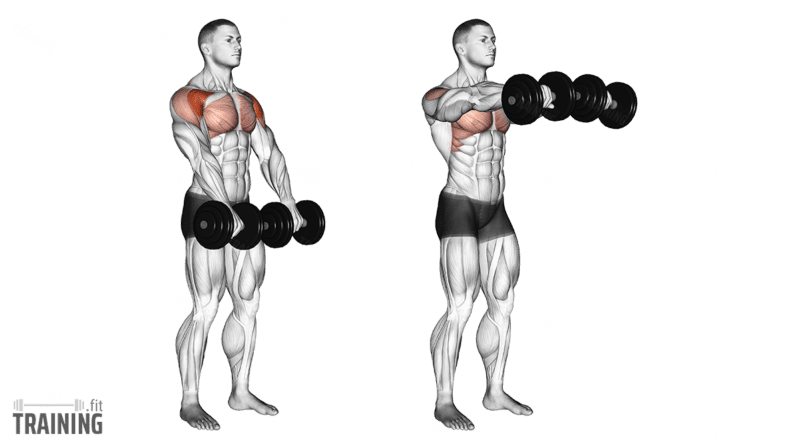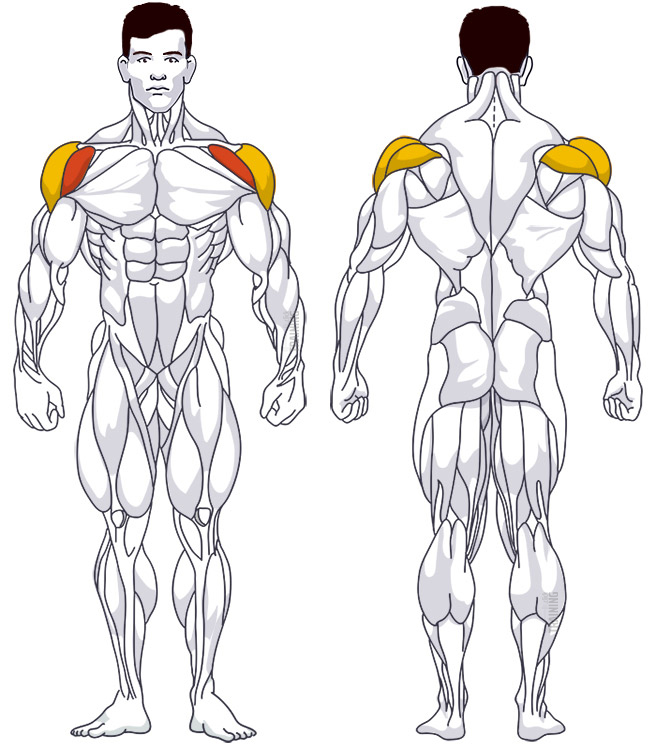Front Raise
Isolation exercise, Free weightsOverview

Main muscles
- Shoulder: Anterior deltoid muscle
(Musculus deltoideus, Pars clavicularis)
Training plans
Here you can find example plans for front raise training:
Front Raise: Basics and alternatives

Involved main muscle groups:
Front Raise
Front raises are a great way to focus on your front shoulders. This simple movement can be done at home using water bottles or other household items if you don’t have dumbbells. In this exercise, you lift your straight arms forward, activating your front deltoids.
While front raises can complement shoulder and chest muscle training, they’re usually not essential for beginners. The flat bench press already works the front shoulder well, so adding an isolation exercise might be too much. Instead, consider barbell rows for the rear shoulder or lateral raises for the side shoulders to strengthen your overall shoulder muscles, depending on your workout plan.
However, if you experience shoulder pain during compound or essential exercises, isolation exercises like front raises with low weights can help strengthen your shoulder muscles, allowing for pain-free training later on.
An alternative to dumbbell front raises is the barbell front raise. This double-armed exercise can better support your weaker side.
Correct execution
Front raises are pretty straightforward. You can perform them with either simultaneous or alternating arm lifts. Simultaneous front raises offer higher training intensity and faster set completion, and you can easily check your posture in the mirror.
Alternating lifts, on the other hand, provide slightly more recovery time for your muscles, potentially allowing for greater training volume.
Video tutorial
Step-by-step instructions
Grab the dumbbells and stand upright with your feet shoulder-width apart. Hold the dumbbells at your sides.
Now, raise one or both arms forward, turning your palms down. Lift your arm until it’s parallel to the floor, with the dumbbells at about shoulder height.
Slowly lower the dumbbells in a controlled manner, returning your hands to the starting position (palms facing each other).
Bonus: For an isometric challenge in your last rep, hold the dumbbells in the raised position as long as possible and lower your arms very, very slowly (60-120 seconds).
Common mistakes
Avoid swinging your arms during front raises. The dumbbells shouldn’t drop and swing backward, only to be propelled forward with momentum. Instead, control the up and down movement. Keep your upper body steady throughout the exercise and don’t follow any swinging motion.
Swinging not only reduces the training effect but can also strain or weaken your shoulder joints.